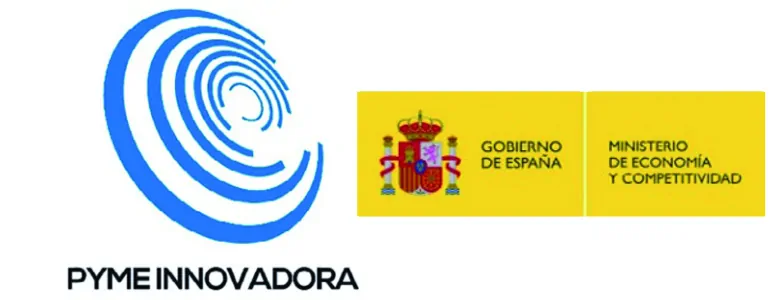
HORIZON EUROPE

 European
European
Specific Challenge:The next generation of large offshore wind energy generators and tidal power generators will help to reach climate goals and CO2 reduction levels and are likely to secure Europe’s technical and economic competitiveness. Accordingly, new challenges related to materials or multi-material architectures must be addressed, to increase operational performance and allow an appreciable reduction of the overall cost of offshore energy generation, taking into account capital expenditure as well as, running and maintenance costs.
The challenge is therefore to improve the operational performance of the next generation of offshore wind energy generators (larger than 8MW) and tidal stream power generators through better performance of their functional (e.g. wind energy generator rotor blades) and/or structural components (e.g. floating or bottom fixed base structure).
Scope:Develop new and/or improved material solutions or improvements by a combination of materials, technologies and design of structural and functional components. This should result in one or more of the following properties: Increased durability and reliability and reduced m...
see more
Specific Challenge:The next generation of large offshore wind energy generators and tidal power generators will help to reach climate goals and CO2 reduction levels and are likely to secure Europe’s technical and economic competitiveness. Accordingly, new challenges related to materials or multi-material architectures must be addressed, to increase operational performance and allow an appreciable reduction of the overall cost of offshore energy generation, taking into account capital expenditure as well as, running and maintenance costs.
The challenge is therefore to improve the operational performance of the next generation of offshore wind energy generators (larger than 8MW) and tidal stream power generators through better performance of their functional (e.g. wind energy generator rotor blades) and/or structural components (e.g. floating or bottom fixed base structure).
Scope:Develop new and/or improved material solutions or improvements by a combination of materials, technologies and design of structural and functional components. This should result in one or more of the following properties: Increased durability and reliability and reduced maintenance requirements (e.g. self-cleaning and/or self-healing properties, increased corrosion and/or erosion resistance, increased fatigue resistance);Smart material functionality and/or the possibility to use embedded sensors for online monitoring of performance and/or structural health monitoring (detection of environmental impact and/or structural and mechanical status);Lightweight (mainly applicable to wind energy);Increased recyclability with respect to current state-of-the-art;Materials should be easy to repair. Consider advanced manufacturing technologies for the reduction of manufacturing costs applicable to already developed materials and take into account costs of (multi)-materials production as well as the design and manufacturability of the new system or product as a whole. Synergies with projects selected under topic DT-FOF-10-2020 Pilot lines for large-part high-precision manufacturing is encouraged.Develop and validate suitable models of predictive materials degradation (mechanical and/or environmental), including Life Cycle Assessment and an economic analysis to demonstrate the viability of the solutions.The materials solutions should profit from existing European advantages in the value chain, such as existing production of high-level materials and/or production technologies;Consider European standardisation and regulation. Possible materials for wind generators include for example, polymer based fibre reinforced (glass, carbon aramid, etc.) composites, nanoparticle filled composites, materials with embedded superhard nanoparticles, metal-plastic systems, high strength steels, high strength lightweight alloys, (e.g titanium, aluminium etc.) with improved efficiency and cost.
Materials for the development of gearboxes and related parts of the powertrain are excluded from the scope of this topic, as well as Materials for wave energy generators.
Proposals submitted under this topic should include a business case and exploitation strategy, as outlined in the Introduction to the LEIT part of this Work Programme.
Activities should start at TRL 4 and achieve TRL 6 at the end of the project.
The Commission considers that proposals requesting a contribution from the EU between EUR 5 and 7 million would allow this specific challenge to be addressed appropriately. This does not preclude submission and selection of proposals requesting other amounts.
Expected Impact:Significant reduction of life cycle costs while maintaining or improving other performance properties of the solution (e.g. obtained by significant reduction of maintenance cost);Development of materials with optimised materials cost and improved durability, reaching cost reductions for off shore energy production of about 40% of the current value (levelised cost of energy), with cost values; produced by wind energy system of clearly below 10 ct€/ kWh or produced by tidal stream generator system of 15 ct€/kWh;Reduction of environmental impact by 35% (based on life cycle assessment and eco design). The performance levels and respective impact of the proposed solution(s) should be in line with those specified in the relevant parts of the SET plan (link to be integrated)
Relevant indicators and metrics, with baseline values, should be clearly stated in the proposal.
Cross-cutting Priorities:Clean EnergyBlue Growth
see less
Consortium characteristics
 :
The aid is European, you can apply to this line any company that is part of the European Community.
:
The aid is European, you can apply to this line any company that is part of the European Community.
characteristics of the Proyecto
Los costes de personal subvencionables cubren las horas de trabajo efectivo de las personas directamente dedicadas a la ejecución de la acción. Los propietarios de pequeñas y medianas empresas que no perciban salario y otras personas físicas que no perciban salario podrán imputar los costes de personal sobre la base de una escala de costes unitarios
Los otros costes directos se dividen en los siguientes apartados: Viajes, amortizaciones, equipamiento y otros bienes y servicios. Se financia la amortización de equipos, permitiendo incluir la amortización de equipos adquiridos antes del proyecto si se registra durante su ejecución. En el apartado de otros bienes y servicios se incluyen los diferentes bienes y servicios comprados por los beneficiarios a proveedores externos para poder llevar a cabo sus tareas
La subcontratación en ayudas europeas no debe tratarse del core de actividades de I+D del proyecto. El contratista debe ser seleccionado por el beneficiario de acuerdo con el principio de mejor relación calidad-precio bajo las condiciones de transparencia e igualdad (en ningún caso consistirá en solicitar menos de 3 ofertas). En el caso de entidades públicas, para la subcontratación se deberán de seguir las leyes que rijan en el país al que pertenezca el contratante
Characteristics of financing
Described in Annex A of the Work Programme.
A number of non-EU/non-Associated Countries that are not automatically eligible for funding have made specific provisions for making funding available for their participants in Horizon 2020 projects. See the information in the Online Manual.
2. Eligibility and admissibility conditions:
Described in Annex B and Annex C of the Work Programme.
Proposal page limits and layout: please refer to Part B of the proposal template in the submission system below.
3. Evaluation:
Evaluation criteria, scoring and thresholds are described in Annex H of the Work Programme.
Submission and evaluation processes are described in the Online Manual.
Under 3 (a)Proposals are first ranked in separate lists according to the topics against which they were submitted (‘topic ranked lists’). When comparing ex aequo proposals from different topics, proposals having a higher position in their respective 'topic ranked list' will be considered to have a higher priority in the overall ranked list.Under 3 (b)For all topics and types of action, the prioritisation will be done first on the basis of the score for Impact, and then on that for Excellence.
Proposals submitted under these topics should include a business case and exploitation strategy, as outlined in the Introduction to the LEIT part of this Work Programme.
Described in Annex A of the Work Programme.
A number of non-EU/non-Associated Countries that are not automatically eligible for funding have made specific provisions for making funding available for their participants in Horizon 2020 projects. See the information in the Online Manual.
2. Eligibility and admissibility conditions:
Described in Annex B and Annex C of the Work Programme.
Proposal page limits and layout: please refer to Part B of the proposal template in the submission system below.
3. Evaluation:
Evaluation criteria, scoring and thresholds are described in Annex H of the Work Programme.
Submission and evaluation processes are described in the Online Manual.
Under 3 (a)Proposals are first ranked in separate lists according to the topics against which they were submitted (‘topic ranked lists’). When comparing ex aequo proposals from different topics, proposals having a higher position in their respective 'topic ranked list' will be considered to have a higher priority in the overall ranked list.Under 3 (b)For all topics and types of action, the prioritisation will be done first on the basis of the score for Impact, and then on that for Excellence.
Proposals submitted under these topics should include a business case and exploitation strategy, as outlined in the Introduction to the LEIT part of this Work Programme.
The threshold for the criteria Excellence and Impact will be 4. The overall threshold, applying to the sum of the three individual scores, will be 12.
4. Indicative time for evaluation and grant agreements:
Information on the outcome of evaluation (two-stage call):
For stage 1: maximum 3 months from the deadline for submission.
For stage 2: maximum 5 months from the deadline for submission.
Signature of grant agreements: maximum 8 months from the deadline for submission.
5. Proposal templates, evaluation forms and model grant agreements (MGA):
Innovation Action:
Specific provisions and funding rates
Standard proposal template
Standard evaluation form
General MGA - Multi-Beneficiary
Annotated Grant Agreement
6. Additional provisions:
Horizon 2020 budget flexibility
Classified information
Technology readiness levels (TRL) – where a topic description refers to TRL, these definitions apply
Members of consortium are required to conclude a consortium agreement, in principle prior to the signature of the grant agreement.
7. Open access must be granted to all scientific publications resulting from Horizon 2020 actions.
Where relevant, proposals should also provide information on how the participants will manage the research data generated and/or collected during the project, such as details on what types of data the project will generate, whether and how this data will be exploited or made accessible for verification and re-use, and how it will be curated and preserved.
Open access to research data
The Open Research Data Pilot has been extended to cover all Horizon 2020 topics for which the submission is opened on 26 July 2016 or later. Projects funded under this topic will therefore by default provide open access to the research data they generate, except if they decide to opt-out under the conditions described in Annex L of the Work Programme. Projects can opt-out at any stage, that is both before and after the grant signature.
Note that the evaluation phase proposals will not be evaluated more favourably because they plan to open or share their data, and will not be penalised for opting out.
Open research data sharing applies to the data needed to validate the results presented in scientific publications. Additionally, projects can choose to make other data available open access and need to describe their approach in a Data Management Plan.
Projects need to create a Data Management Plan (DMP), except if they opt-out of making their research data open access. A first version of the DMP must be provided as an early deliverable within six months of the project and should be updated during the project as appropriate. The Commission already provides guidance documents, including a template for DMPs. See the Online Manual.
Eligibility of costs: costs related to data management and data sharing are eligible for reimbursement during the project duration.
The legal requirements for projects participating in this pilot are in the article 29.3 of the Model Grant Agreement.
8. Additional documents:
1. Introduction WP 2018-20
5. Introduction to Leadership in enabling and industrial technologies (LEITs) WP 2018-20
5ii. Nanotechnologies, advanced materials, advanced manufacturing and processing, biotechnology WP 2018-20
General annexes to the Work Programme 2018-2020
Legal basis: Horizon 2020 Regulation of Establishment
Legal basis: Horizon 2020 Rules for Participation
Legal basis: Horizon 2020 Specific Programme
Additional information about the call
other advantages


